Lots of Mac users have found themselves amid a surge in malware attacks skewing browser settings to promote dodgy services via Searchesmia.com.
What is the Searchesmia Mac virus?
The tactic of modifying browser preferences has dominated the Mac threat landscape for years and isn’t likely to lose momentum anytime soon. This attack model is lucrative for several reasons. It doesn’t take super-complex distribution to pull through, with vanilla social engineering hoaxes being enough to get users on the hook. The applications that set this activity in motion are relatively simple by design and don’t require highly tedious programming work. This triviality, combined with significant financial gains through dirty traffic monetization on a large scale, is a lure for criminals. The ongoing campaign in which victims are incessantly redirected to Searchesmia.com fits this train of thought to the fullest. While it’s focused on giving Google Chrome preferences an overhaul, other web browsers such as Safari and Mozilla Firefox aren’t in safe space either. To top it off, the underlying malware is platform-agnostic and therefore hits both PCs and Macs.
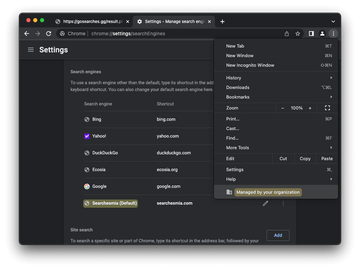
The most conspicuous symptom of this attack is that Searchesmia.com replaces the user-defined search engine that’s used by default. Homepage and new tab page customizations may also undergo a similar tweak – obviously, with the unsuspecting user’s awareness and consent. As a result, every web navigation session ends up generating hits to the page in question. The interesting thing is that this URL only appears momentarily before the browser resolves another junk site, so the victims don’t really interact with Searchesmia.com itself. Most of the time, the landing page is a bogus search provider like Gosearches.gg. Some variants of the malware promote the Goodsearchez.com service that further redirects to Bing. Regardless of destination resource, the fact that the browser slips out of control is a drag, in and of itself.
Searchesmia.com virus may re-infect your Mac multiple times unless you delete all of its fragments, including hidden ones. Therefore, it is recommended to download Combo Cleaner and scan your system for these stubborn files. This way, you may reduce the cleanup time from hours to minutes.
Download Now Learn how Combo Cleaner works. If the utility spots malicious code, you will need to buy a license to get rid of it.When faced with a nuisance like this, the first thing the average Mac user will do is get into the affected browser’s settings and specify the right parameters. That certainly makes sense, except that the attempt will be to no avail. A clue that helps understand why regular troubleshooting doesn’t work here is clearly visible in Chrome. Its main drop-down menu includes an offbeat entry that says, “Managed by your organization”. This is normal experience in work environments where network admins enforce policies to align employees’ activities with corporate standards and regulations. However, in the case of somebody’s personal Mac versus a company-issued one, such an inscription is a red flag. It means that a piece of malicious code has blatantly imposed particular behavior patterns on the computer.
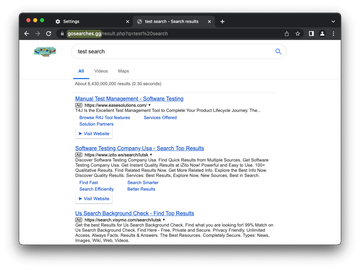
To do this, the harmful app at the core of the Searchesmia.com browser hijack misuses Profiles, a macOS feature intended for standardizing settings but often weaponized by cybercrooks. This interference occurs at the level of Terminal during early stages of the exploitation. By hard-coding rogue preferences in a system, the virus reduces the breadth of the victim’s web surfing down to Searchesmia.com and a few affiliated websites that mimic search providers. In this situation, changing the customizations manually is a waste of time because the configuration profile will keep putting the unwanted ones into effect. With that said, eliminating this entity is a prerequisite for successful disinfection since it overrides the persistence of the offending program and unlocks regular adjustments on the user’s end.
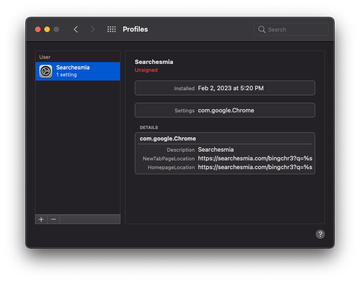
Searchesmia.com starts causing trouble on a Mac after the user installs something they shouldn’t have. At the time of writing, the catalyst for most contamination instances is a fake Google Docs extension that looks just about the same as the original but harbors shady characteristics under its neat wrapping. The biggest giveaway is that this add-on is advertised and hosted on questionably safe software marketplaces frequented by freebie lovers. It may also constitute an application bundle that puts a benign component front and center while concealing dubious extras. Another toxic extension that triggers Searchesmia.com redirecting on Chrome is called App. This one is less widespread, and yet it’s gearing up for a rise.
The lesson to learn from these facts is that a little bit of software installation hygiene can forestall such issues. In particular, it’s definitely a good idea to explore the structure of a setup client before engaging with it, and to stick with official application portals. If your vigilance has failed for whatever reason and the Searchesmia.com virus is already on board, use the following recommendations to get rid of it and make your browser work the way it should.
Searchesmia.com virus manual removal for Mac
The steps listed below will walk you through the removal of this malicious application. Be sure to follow the instructions in the specified order.
Expand the Go menu in your Mac’s Finder bar and select Utilities as shown below.
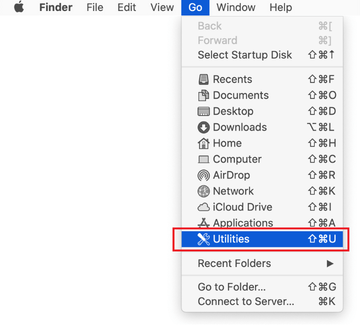
Locate the Activity Monitor icon on the Utilities screen and double-click on it.
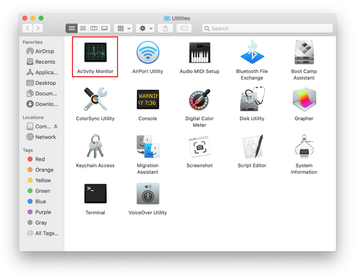
In the Activity Monitor app, look for Searchesmia or another process that appears suspicious. To narrow down your search, focus on unfamiliar resource-intensive entries on the list. Keep in mind that its name isn’t necessarily related to the way the threat is manifesting itself, so you’ll need to trust your own judgement. If you pinpoint the culprit, select it and click on the Stop icon in the upper left-hand corner of the screen.
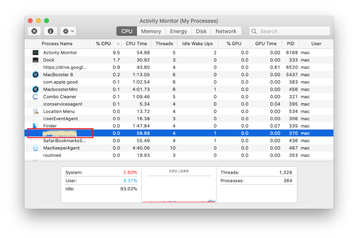
When a follow-up dialog pops up asking if you are sure you want to quit the troublemaking process, select the Force Quit option.
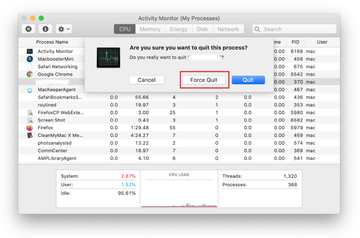
Click on the Go menu icon in the Finder again and select Go to Folder. You can as well use the Command-Shift-G keyboard shortcut.
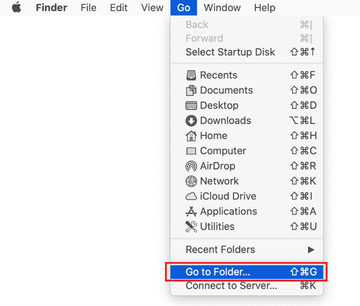
Type /Library/LaunchAgents in the folder search dialog and click on the Go button.
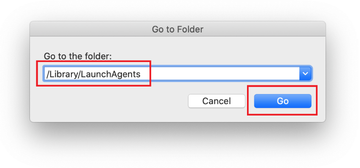
Examine the contents of the LaunchAgents folder for dubious-looking items. Be advised that the names of files spawned by malware may give no clear clues that they are malicious, so you should look for recently added entities that appear to deviate from the norm.
As an illustration, here are several examples of LaunchAgents related to mainstream Mac infections: com.updater.mcy.plist, com.avickUpd.plist, and com.msp.agent.plist. If you spot files that don’t belong on the list, go ahead and drag them to the Trash.
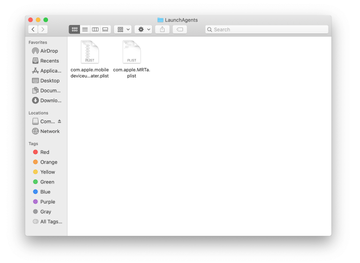
Use the Go to Folder lookup feature again to navigate to the folder named ~/Library/Application Support (note the tilde symbol prepended to the path).

When the Application Support directory is opened, identify recently generated suspicious folders in it and send them to the Trash. A quick tip is to look for items whose names have nothing to do with Apple products or apps you knowingly installed. A few examples of known-malicious folder names are com.AuraSearchDaemon, ProgressSite, and IdeaShared.
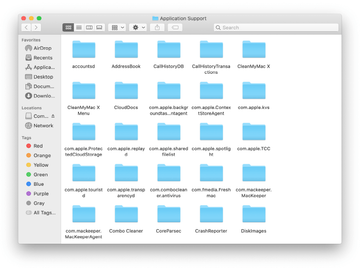
Enter ~/Library/LaunchAgents string (don’t forget to include the tilde character) in the Go to Folder search area.
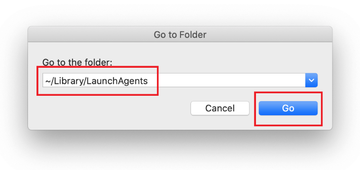
The system will display LaunchAgents residing in the current user’s Home directory. Look for the following dodgy items related to Searchesmia redirect virus: com.ConnectionCache.service.plist, com.digitalprotection.emcupdater.plist, com.mulkey.plist, com.nbp.plist, and com.sys.system.plist. Drag these files to the Trash.
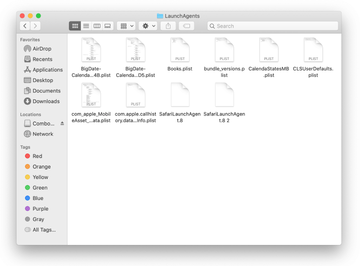
Type /Library/LaunchDaemons in the Go to Folder search field.
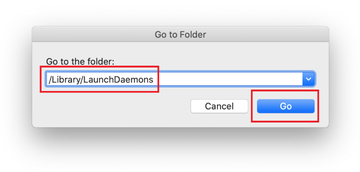
In the LaunchDaemons path, try to pinpoint the files the malware is using for persistence. Several examples of the items cropped by this Mac infection are com.ConnectionCache.system.plist, and com.mulkeyd.plist. Delete the sketchy files immediately.
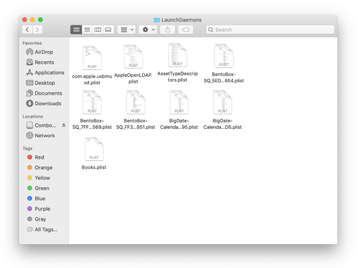
Click on the Go menu icon in your Mac’s Finder and select Applications on the list.
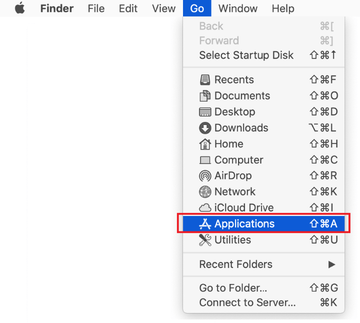
Find the app that clearly doesn’t belong there and move it to the Trash. If this action requires your admin password for confirmation, go ahead and enter it.

Expand the Apple menu and select System Preferences.
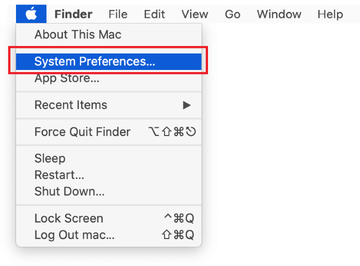
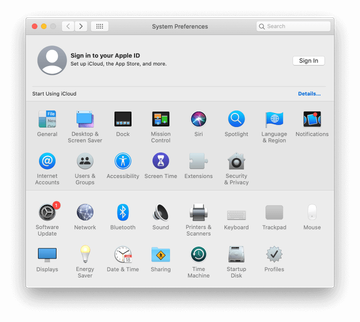
Proceed to Users & Groups and click on the Login Items tab.
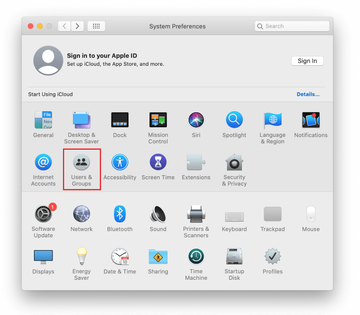
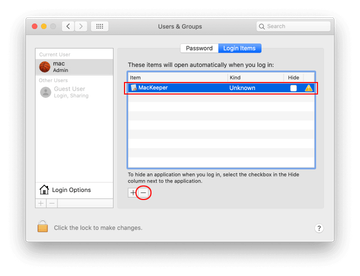
Now select Profiles under System Preferences. Look for a malicious item in the left-hand sidebar. Several examples of configuration profiles created by Mac adware include AdminPrefs, TechSignalSearch, MainSearchPlatform, Searchesmia, and Safari Preferences. Select the offending entity and click on the minus sign at the bottom to eliminate it.
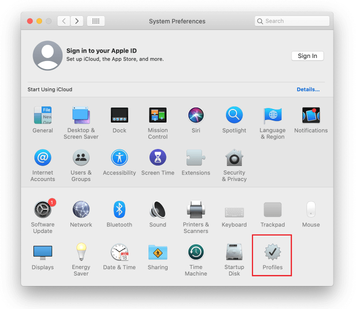
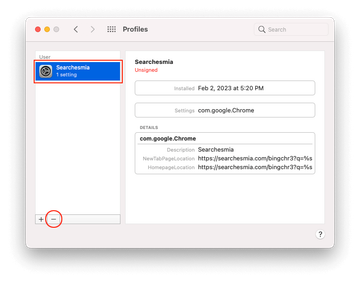
Get rid of Searchesmia.com virus in web browser on Mac
To begin with, the web browser settings taken over by the Searchesmia.com virus should be restored to their default values. Although this will clear most of your customizations, web surfing history, and all temporary data stored by websites, the malicious interference should be terminated likewise. The overview of the steps for completing this procedure is as follows:
- Remove Searchesmia.com virus from Safari
Open the browser and go to Safari menu. Select Preferences in the drop-down list.
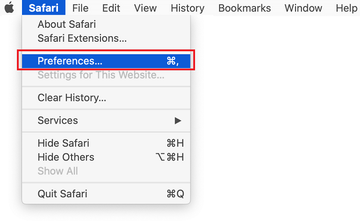
Once the Preferences screen appears, click on the Advanced tab and enable the option saying “Show Develop menu in menu bar”.
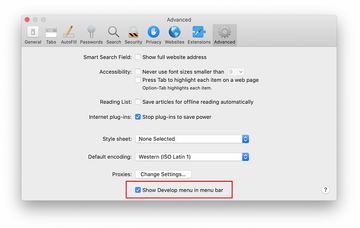
Now that the Develop entry has been added to the Safari menu, expand it and click on Empty Caches.
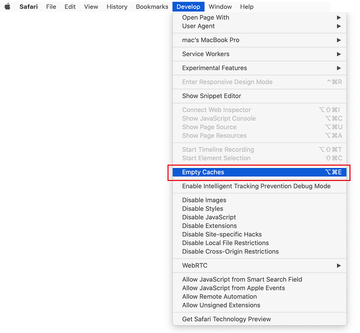
Now select History in the Safari menu and click on Clear History in the drop-down list.
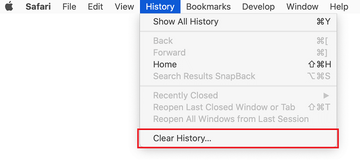
Safari will display a dialog asking you to specify the period of time this action will apply to. Select all history to ensure a maximum effect. Click on the Clear History button to confirm and exit.

Go back to the Safari Preferences and hit the Privacy tab at the top. Find the option that says Manage Website Data and click on it.

The browser will display a follow-up screen listing the websites that have stored data about your Internet activities. This dialog additionally includes a brief description of what the removal does: you may be logged out of some services and encounter other changes of website behavior after the procedure. If you’re okay with that, go ahead and click on the Remove All button.
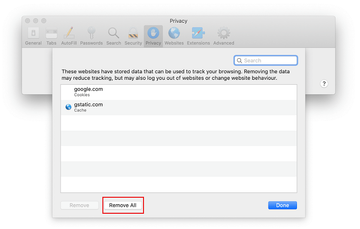
Restart Safari
- Remove Searchesmia.com in Google Chrome
Open Chrome, click the Customize and control Google Chrome (⁝) icon in the top right-hand part of the window, and select Settings in the drop-down
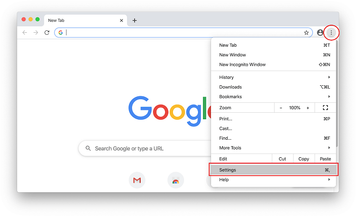
When on the Settings pane, select Advanced
Scroll down to the Reset settings section.
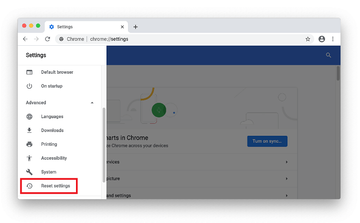
Confirm the Chrome reset on a dialog that will pop up. When the procedure is completed, relaunch the browser and check it for malware activity.
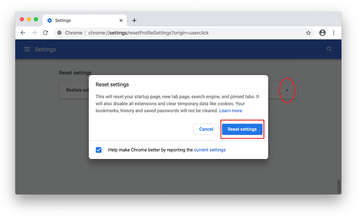
- Remove Searchesmia.com from Mozilla Firefox
Open Firefox and go to Help – Troubleshooting Information (or type about:support in the URL bar and press Enter).
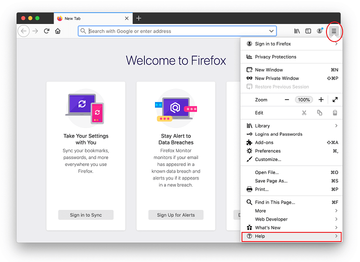
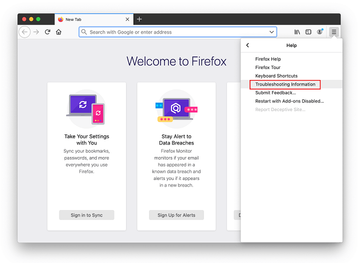
When on the Troubleshooting Information screen, click on the Refresh Firefox button.
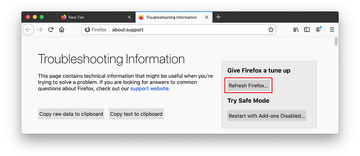
Confirm the intended changes and restart Firefox.
Get rid of Searchesmia.com virus using Combo Cleaner removal tool
The Mac maintenance and security app called Combo Cleaner is a one-stop tool to detect and remove Searchesmia.com virus. This technique has substantial benefits over manual cleanup, because the utility gets hourly virus definition updates and can accurately spot even the newest Mac infections.
Furthermore, the automatic solution will find the core files of the malware deep down the system structure, which might otherwise be a challenge to locate. Here’s a walkthrough to sort out the Searchesmia.com issue using Combo Cleaner:
Download Combo Cleaner installer. When done, double-click the combocleaner.dmg file and follow the prompts to install the tool onto your Mac.
By downloading any applications recommended on this website you agree to our Terms and Conditions and Privacy Policy. The free scanner checks whether your Mac is infected. To get rid of malware, you need to purchase the Premium version of Combo Cleaner.
Open the app from your Launchpad and let it run an update of the malware signature database to make sure it can identify the latest threats.
Click the Start Combo Scan button to check your Mac for malicious activity as well as performance issues.
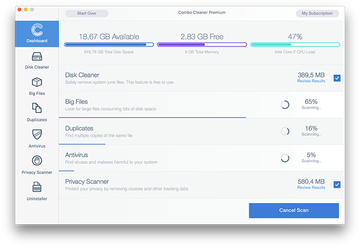
Examine the scan results. If the report says “No Threats”, then you are on the right track with the manual cleaning and can safely proceed to tidy up the web browser that may continue to act up due to the after-effects of the malware attack (see instructions above).
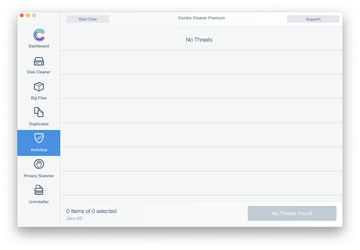
In case Combo Cleaner has detected malicious code, click the Remove Selected Items button and have the utility remove Searchesmia.com threat along with any other viruses, PUPs (potentially unwanted programs), or junk files that don’t belong on your Mac.
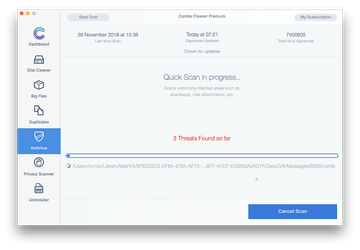
Once you have made doubly sure that the malicious app is uninstalled, the browser-level troubleshooting might still be on your to-do list. If your preferred browser is affected, resort to the previous section of this tutorial to revert to hassle-free web surfing.
